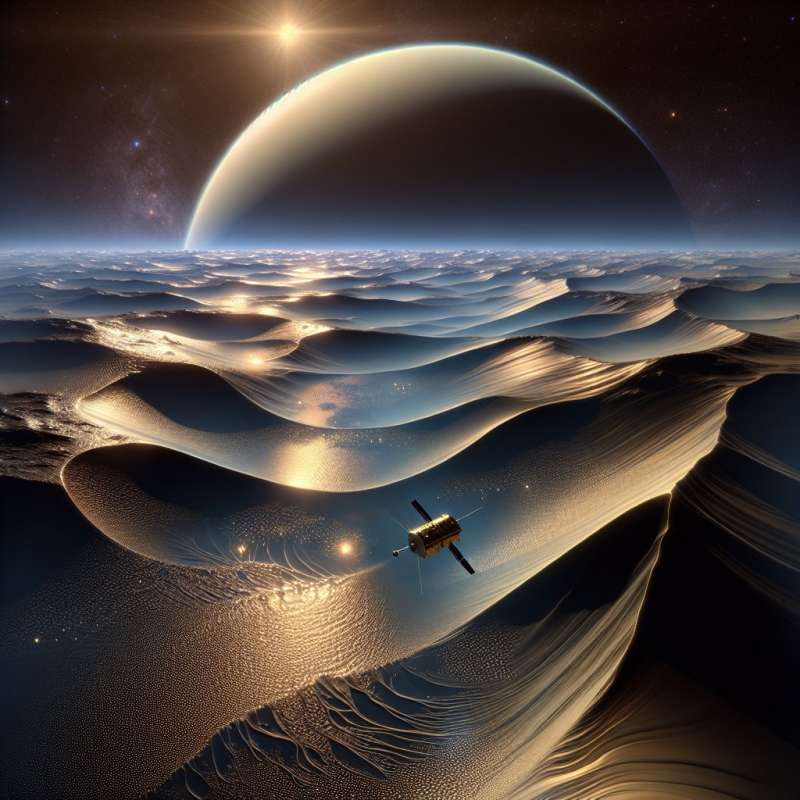
Titan: Saturn's Largest Moon
Titan, surpassing Mercury in size, is Saturn's largest moon and the second-largest in the Solar System. It's enveloped in a thick, nitrogen-rich atmosphere that obscures its surface from view.
Methane Lakes and Rivers
Unlike any other place in the Solar System, Titan boasts liquid methane and ethane lakes and rivers, with the largest sea, Kraken Mare, being larger than the Great Lakes of North America.
Thick Hazy Atmosphere
Titan's atmosphere is dense and hazy, four times denser than Earth's. This haze is composed of complex organic molecules, leading scientists to theorize about prebiotic chemical processes below.
Possibility of Life
While Titan is inhospitably cold for Earth-like life, its chemical richness suggests the potential for life forms based on different chemistry, possibly in sub-surface water-ammonia oceans.
Cassini-Huygens Contributions
The Cassini-Huygens mission revealed Titan's landscape, including dunes made of hydrocarbon grains and an ice crust, shaping our understanding of this moon's complex geology and meteorology.
Astrobiology and Future Missions
Future missions to Titan, like Dragonfly, aim to explore its habitability. This rotorcraft will traverse Titan's varied terrains, searching for organic molecule patterns and possible biosignatures.
Seasonal Weather Patterns
Titan experiences seasons, each lasting about seven Earth years. Its weather includes methane rain, which carves channels in its surface, and winds shaping its dunes, mirroring Earth's dynamic climate.
What is Titan's atmosphere composed of?
Mostly hydrogen and helium
Primarily nitrogen, like Earth
Carbon dioxide and oxygen
Company